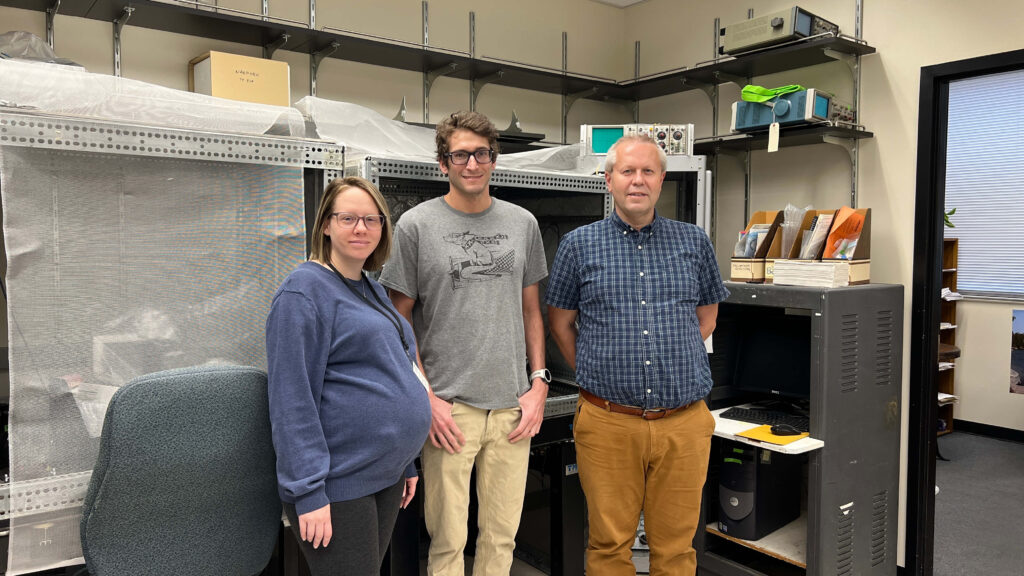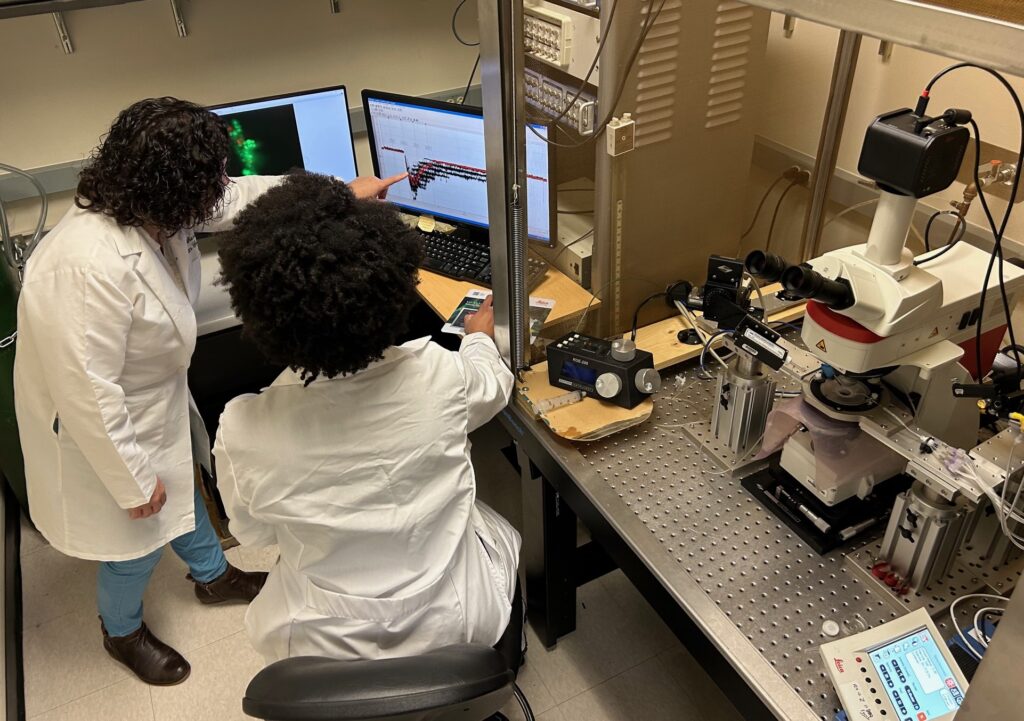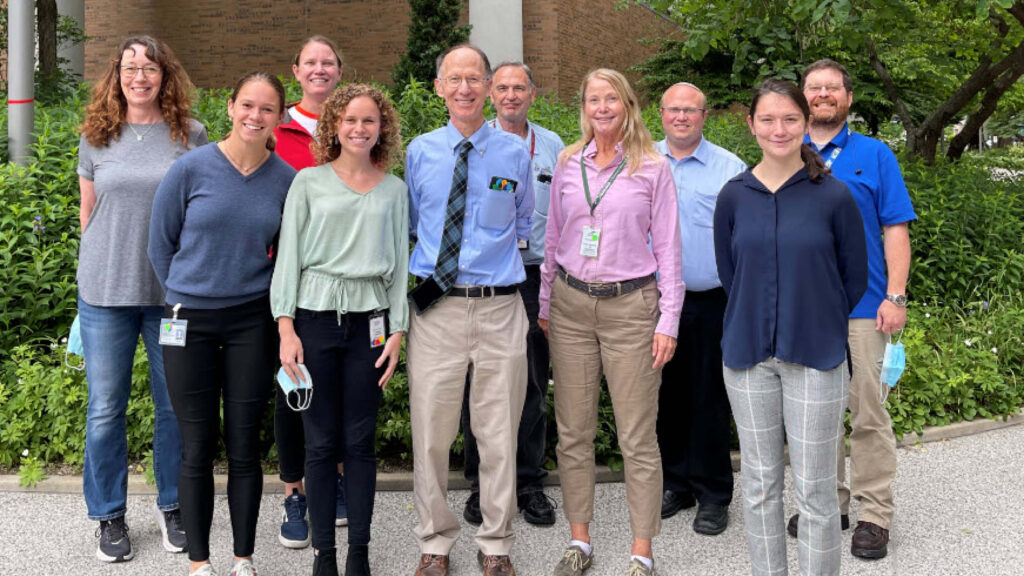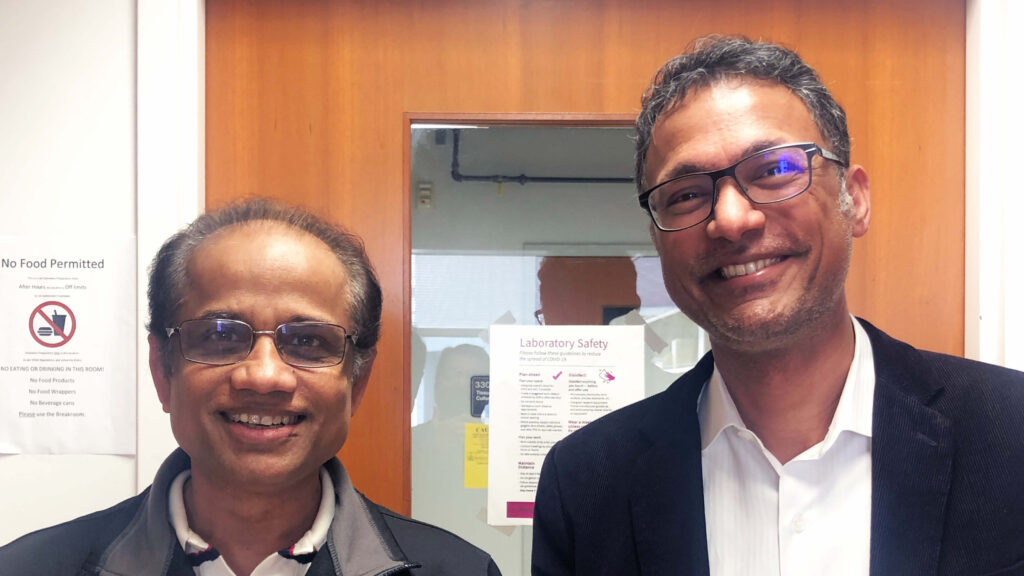
Gustav Akk Lab
The Akk lab focuses on the function and regulation of transmitter-gated ion channels, especially the GABA-A and nicotinic acetylcholine receptors. These receptors bind and respond to presynaptically released transmitter molecules with conformational changes that activate the receptor and enable flow of ions through the cell membrane. The mechanisms by which physiologic and clinical agonists and antagonists interact with transmitter-gated ion channels are critical to our understanding of synaptic transmission and its downstream behavioral effects.

Baron Chanda Lab
The Chanda lab seeks to understand the biophysical basis of electrical signaling by voltage-gated ion channels. Specifically, the lab is interested in the molecular mechanisms of pacemaker ion channels which play a central role in rhythmic circuits underpinning physiological processes such as brain waves and cardiac pacemaking. To shed light on their role in human health and disease, we use single molecule methods to probe the structure and dynamics of these channels.

Wayland Cheng Lab
The Cheng lab seeks to understand structure-function relationships in neuronal ligand-gated ion channels, as well as the molecular mechanisms of drugs that regulate these ion channels. Specifically, the lab studies pentameric ligand-gated ion channels such as the GABA(A) receptor, which are targets of anesthetics and sedatives, and the transient receptor potential ion channel TRPM3, which is a potential target for the development of analgesics. The fundamental insights gained from this work may facilitate structure-based drug discovery.

Alex Evers Lab
The Evers lab studies steroid (cholesterol, neurosteroids, oxysterols) binding to and modulation of membrane proteins. A major focus of the lab is the mechanisms of action of neurosteroids on ligand-gated ion channels, principally GABAA receptors and NMDA receptors. Additional projects examine cholesterol modulation of proteins including the anoctamin family of scramblases (TMEM16) and GPCRs (GPR155, GPR161). We identify steroid binding sites using photoaffinity labeling coupled with middle-down and intact protein mass spectrometry. Binding is further characterized using cryo-electron microscopy and fluorescence (FRET) measurements. The biological importance of identified binding sites is then confirmed using site-directed mutagenesis with functional readouts (electrophysiology, biochemical assays). We use similar approaches to identify the sites of action for small hydrophobic molecules such as anesthetics (e.g. propofol).

Vivian Gonzalez-Perez Lab
The Gonzalez- Perez lab focuses on ion channel biophysics and cellular physiology. The lab’s research goal is to understand the molecular and cellular mechanisms whereby ion channel activity mediates host defense, particularly in the context of neural and epithelial cells. The current research specifically studies the role of BK-type potassium channels in neuroinflammation and in intestinal epithelial (patho)physiology. At present, the lab research program seeks to unravel the contribution of BK channels (and their regulatory subunits) to inflammatory conditions such as opioid-induced hyperalgesia, chronic pain, and inflammatory bowel disease.

Richard Hotchkiss Lab
The Hotchkiss lab focuses on defining new therapeutic approaches to sepsis, a highly lethal disorder that occurs during severe overwhelming infection. The first group to show that sepsis-induced massive programmed cell death (apoptosis) of immune effector cells in patients dying of the disorder. Recently, the lab has concentrated on identifying mechanisms of immunosuppression during sepsis and developing new immuno-adjuvant therapies.

Christopher Lingle Lab
The Lingle lab focuses on the functional properties and physiological roles of a specific K+ ion channel, the BK channel, regulated by membrane voltage and intracellular Ca2+ signals. This dual regulation by two distinct signals has made BK channels of interest in two important areas: first, the mechanistic question of how multiple signaling factors can converge to influence the activity of a membrane protein and, second, what the physiological roles may be of this widely expressed K+ channel. A number of genetic diseases, including hypertension and forms of epilepsy, are attributed to mutations of BK channel subunits.

Website coming soon!
Dolores Njoku Lab
The Njoku lab focuses on liver injury mediated by the immune system and related to drugs such as anti-seizure medications and antibiotics. The goal of the research is to uncover pieces of immune system proteins that may trigger autoimmune reactions in the liver and to identify molecular pathways that may be involved.

Aaron Norris Lab
The Norris lab focuses on understanding the overlapping neural circuitry and pathways regulating sleep, sedation, affect, respiration, temperature, and arousal. I have a long-term interest in the connections between sleep disturbances, stress-related disorders, psychiatric conditions, and neurogenerative process. A second avenue of investigation is the regulation of body temperature and how these neural circuits may also regulate sleep. Opiates alter many of these processes, particularly respiratory drive. We are also exploring how respiration, sleep, and temperature are altered by both clinically and illicitly used drugs.

Arvind Palanisamy Lab
The Palanisamy lab focuses on investigating the effect of perinatal pharmacotherapy, including maternally administered drugs, on neurodevelopment and early life metabolism. To study this question, they use a pregnant rat model and an array of techniques including, but not limited to, immunohistochemistry, neurobehavioral testing, and neural progenitor cell culture. Their current interest is in comprehensively assessing the fetal effects of maternally administered oxytocin during labor. Another focus of the lab is to identify changes in viral receptor expression and immune signatures in the nasal epithelium of pregnant women to determine susceptibility to pandemics. For this line of research, they use an array of techniques including single cell RNA sequencing, mass, and flow cytometry.